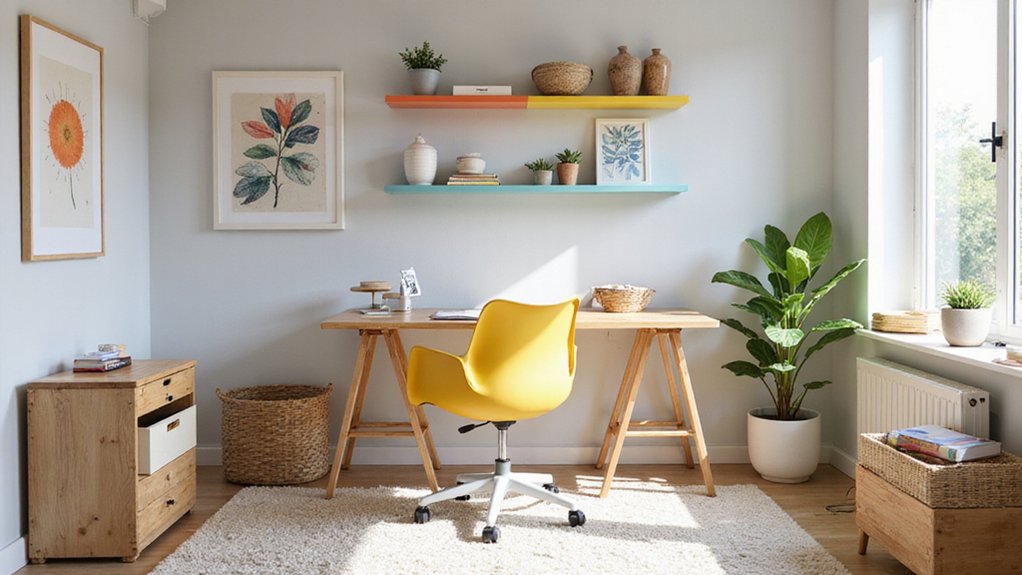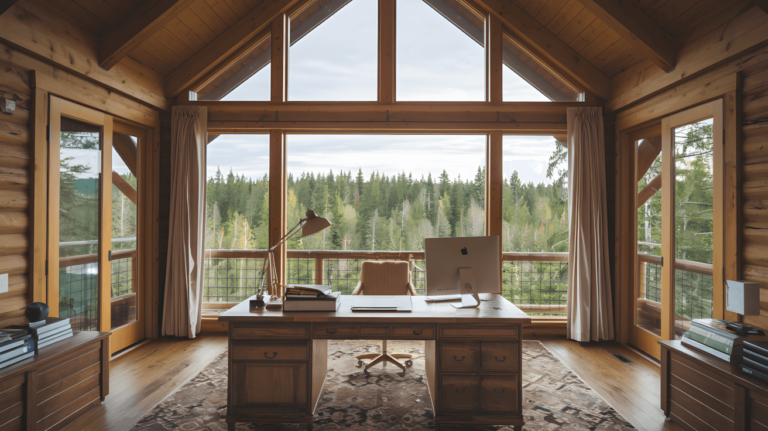Creating the perfect study space for your kid doesn’t require an interior design degree—just some smart choices that actually work. I’ve watched too many parents throw money at expensive desks and trendy accessories, only to find their children still sprawling across the kitchen table with homework scattered everywhere. The real game-changer? Understanding how simple environmental tweaks can literally rewire how your child’s brain processes information.
Your child’s study room should fight for their attention, not against it. When you position that desk perpendicular to north-facing windows, you’re giving them consistent, glare-free natural light that keeps their mind sharp without the afternoon sun creating a spotlight on their math worksheets. Pair this with height-adjustable furniture featuring pneumatic controls and tilting surfaces, and you’ve built a workspace that grows with them instead of becoming obsolete in two years.
The magic happens in the details most parents overlook. Calming blues and focus-enhancing greens on the walls aren’t just pretty—they’re backed by cognitive science, while those anxiety-inducing reds can sabotage concentration before your child even opens a book. Combine smart color choices with organization systems using clear containers,picture labels, andcolor-coded folders**, and you’ll transform their learning environment into anengaging, distraction-free zone** that actually makes them want to study.
Natural Light Positioning for Optimal Brain Function
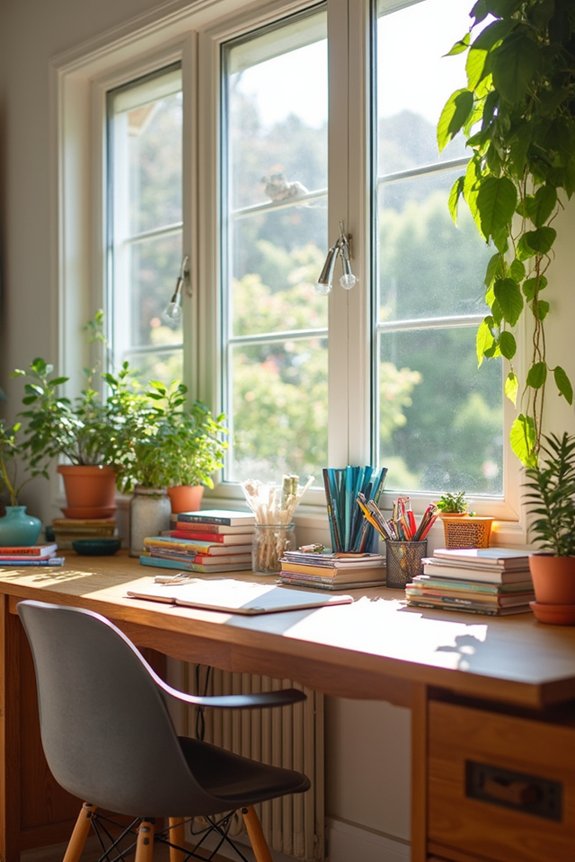
When designing your child’s study space, positioning their desk near a window becomes one of the most impactful decisions you’ll make for their learning environment. Natural light directly influences your child’s circadian rhythm, improving alertness and concentration during study hours.
You’ll want to position the desk perpendicular to windows, preventing glare while maximizing light exposure. Morning sunlight particularly enhances cognitive function and mood regulation. If you’re dealing with harsh afternoon sun, install adjustable blinds or sheer curtains.
North-facing windows provide consistent, gentle illumination throughout the day. This strategic positioning naturally reduces eye strain and supports your child’s brain development.
Ergonomic Furniture That Grows With Your Child
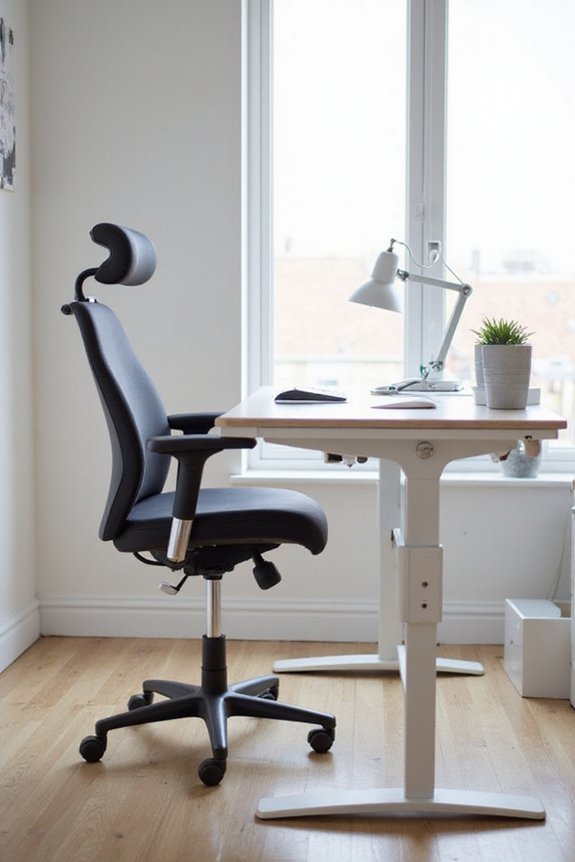
The right ergonomic furniture forms the foundation of your child’s study success, directly impacting their posture, comfort, and focus during learning sessions. Investing in adjustable furniture prevents back pain, reduces fatigue, and accommodates your child’s growing body over several years.
- Height-adjustable desks and chairs – Look for pneumatic controls that let you modify surface height as your child grows, ensuring proper elbow angles and foot placement.
- Tilting desktop surfaces – Angled work surfaces reduce neck strain when reading and writing, promoting better spinal alignment during study sessions.
- Footrests with adjustable heights – Support proper leg positioning when feet can’t reach the floor comfortably.
Color Psychology: Choosing Hues That Enhance Learning
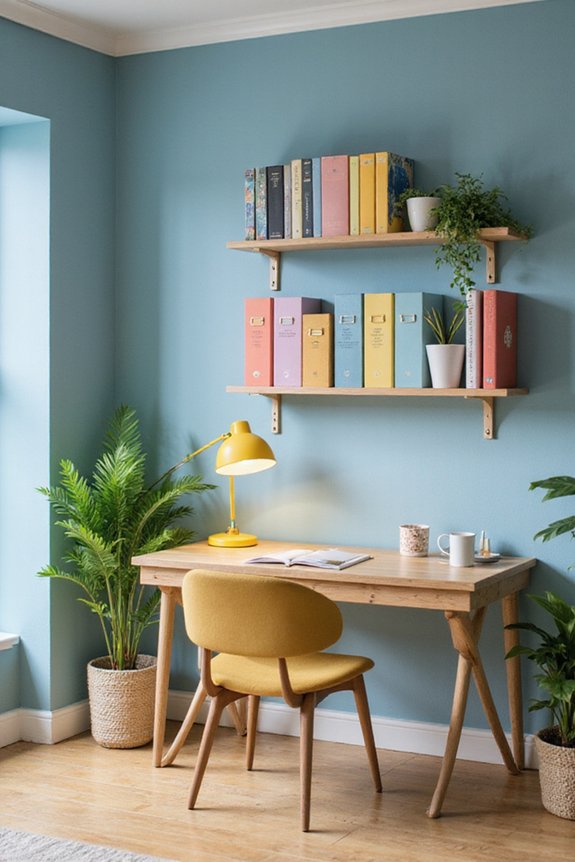
Beyond furniture placement and organization, colors surrounding your child profoundly influence their ability to concentrate, retain information, and maintain motivation throughout study sessions. Blue promotes calmness and mental clarity, making it ideal for reading areas. Green reduces eye strain and enhances focus during lengthy homework sessions.
Yellow stimulates creativity and memory retention but use it sparingly to avoid overstimulation. Avoid bright red, which can increase anxiety and restlessness. Soft purple encourages imagination while maintaining concentration. Consider neutral backgrounds with colorful accents through artwork, supplies, or accessories. You’ll create an environment that naturally supports your child’s learning style and academic success.
Organization Systems That Kids Actually Want to Use
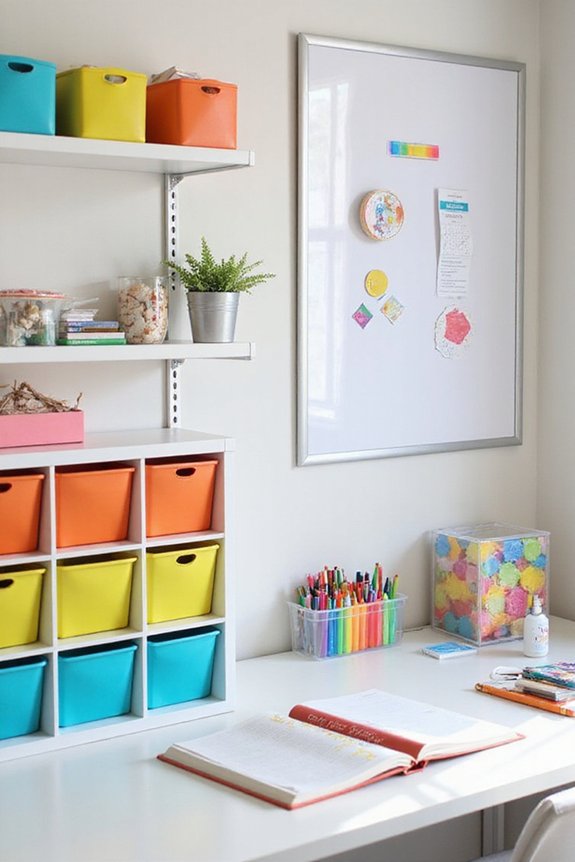
Creating the perfect color scheme means nothing if your child can’t find their supplies or homework gets lost in clutter. You need organization systems that work with your child’s natural habits, not against them.
The key is making organization so simple and appealing that kids actually maintain it:
- Clear containers with picture labels – Kids can see everything at a glance and know exactly where items belong, even if they can’t read yet.
- Color-coded subject folders – Assign each school subject a specific color for instant visual recognition and sorting.
- Desktop organizers with compartments – Create designated homes for pens, erasers, and small supplies within arm’s reach.
Creating Dedicated Zones for Different Activities
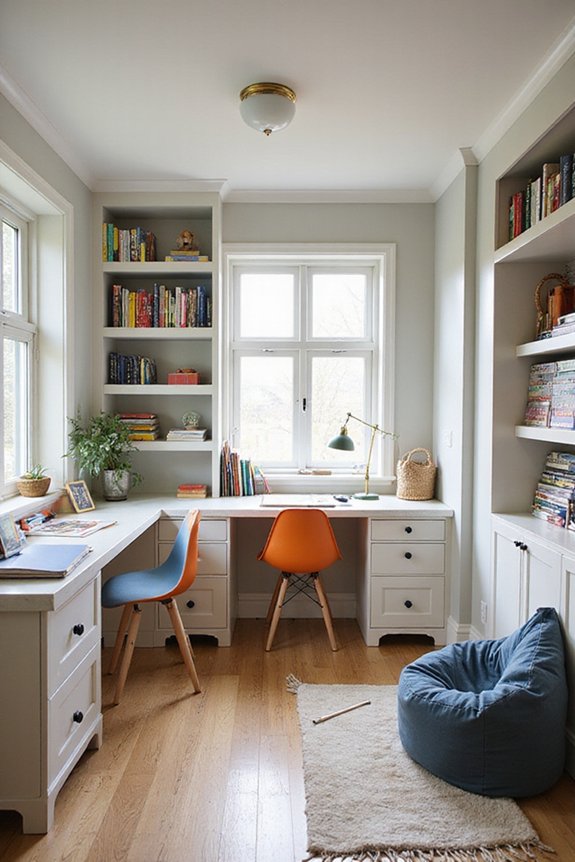
How can you maximize your child’s focus and productivity in their study space? Create distinct zones for different activities within the room. Designate a quiet corner for focused homework with minimal distractions.
Set up an art station with supplies easily accessible for creative projects. Establish a reading nook with comfortable seating and good lighting. Include a collaborative area where your child can work on group projects or receive help.
Use visual cues like colorful rugs, different lighting, or furniture arrangements to clearly define each zone. This approach helps your child’s brain automatically shift into the appropriate mindset for each activity.
Incorporating Interactive Learning Tools and Technology
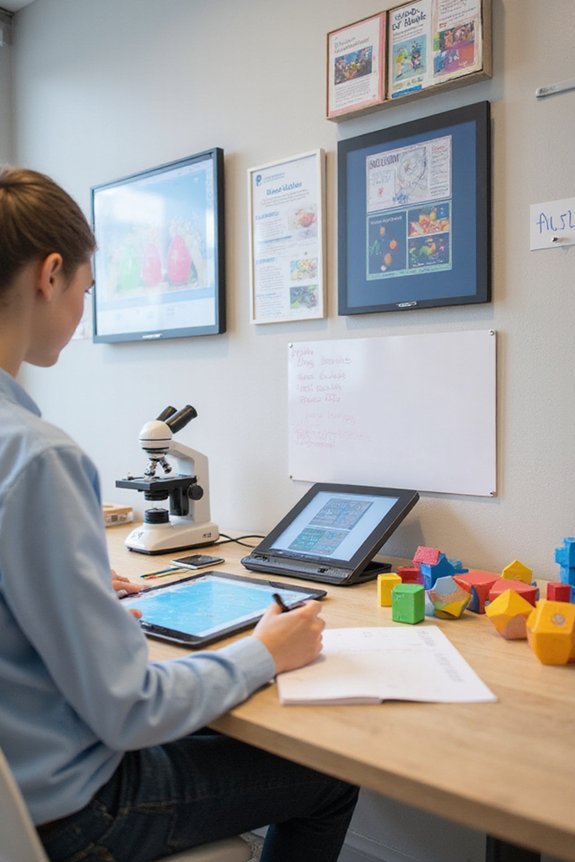
Today’s learning environment thrives when you strategically blend traditional study methods with modern technology. Interactive tools transform passive learning into engaging experiences that capture your child’s attention and enhance retention.
Consider these tech-enhanced learning solutions:
- Digital whiteboards or tablet displays – Perfect for visual learners who benefit from drawing diagrams, solving math problems, or creating mind maps digitally
- Educational apps and learning software – Gamified lessons make subjects like coding, languages, and science more appealing through interactive challenges
- Voice-activated assistants – Help with quick research questions, pronunciation practice, and setting study timers without disrupting workflow
Balance screen time with hands-on activities for ideal learning outcomes.
Inspiring Wall Art and Educational Displays
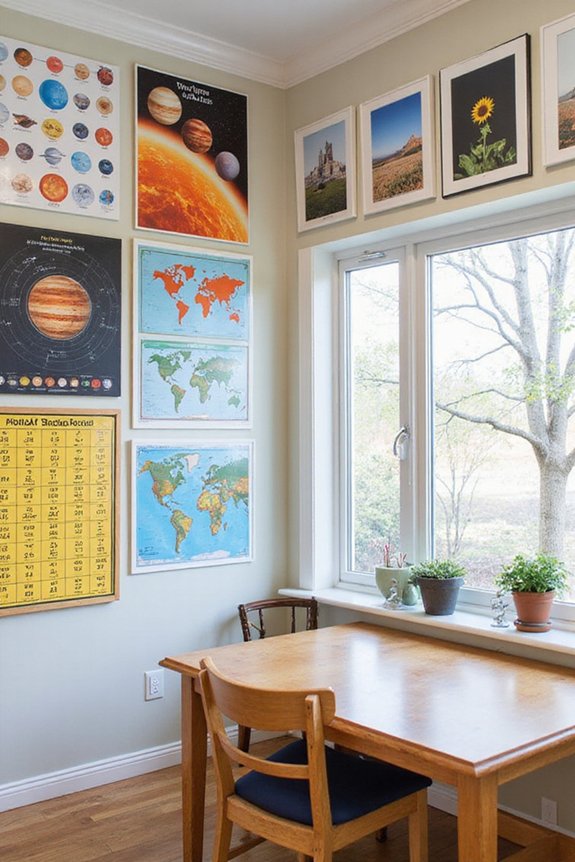
When thoughtfully chosen, wall art and educational displays transform blank study room walls into powerful learning catalysts that spark curiosity and reinforce key concepts. You’ll want to create visual anchors that support your child’s curriculum while maintaining aesthetic appeal.
Install educational posters featuring multiplication tables, world maps, or scientific diagrams at eye level. Rotate artwork seasonally to prevent visual fatigue. Consider magnetic boards for displaying your child’s achievements and current projects. Add inspirational quotes in colorful frames to boost motivation during challenging study sessions. Remember, you’re creating an environment where learning feels exciting rather than overwhelming through strategic visual storytelling.
Minimizing Distractions While Maintaining Visual Interest
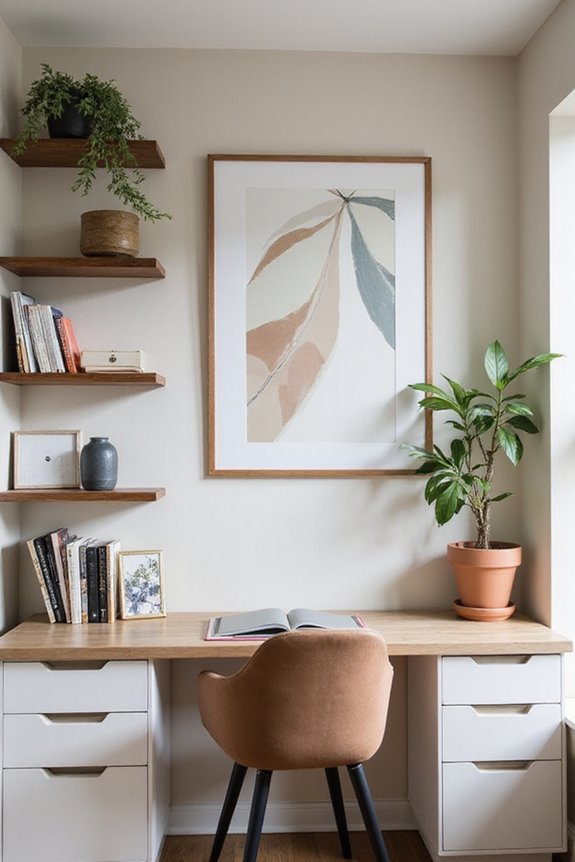
While colorful educational displays energize learning spaces, finding the right balance prevents overstimulation that can derail focus. You’ll want to create zones that captivate without overwhelming your child’s concentration.
- Designate quiet visual zones – Keep the main study area neutral with one focal piece of art, then add colorful elements to peripheral areas like reading nooks or supply stations.
- Use rotating displays – Switch out educational posters monthly to maintain novelty without cluttering walls permanently.
- Choose calming color palettes – Incorporate soft blues, greens, or warm earth tones that stimulate creativity while promoting concentration.
Personalizing the Space to Reflect Your Child’s Interests
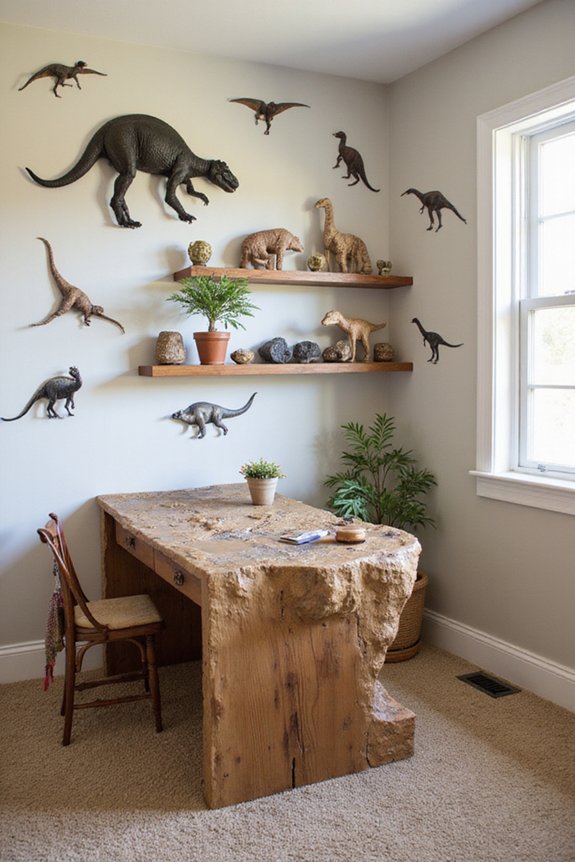
How can you transform a generic study space into a haven that truly motivates your child to learn? Start by incorporating their favorite colors through desk accessories, storage bins, or wall art. Display their artwork, achievements, and collections on designated shelves or bulletin boards.
Choose themed decorations that align with their passions—whether it’s dinosaurs, space exploration, or music. Add functional items that reflect their interests, like science-themed organizers or sports-inspired bookends. Include plants they can care for or a small aquarium if they love nature. These personal touches create ownership and make studying feel less like a chore.
Storage Solutions That Keep Supplies Accessible Yet Tidy
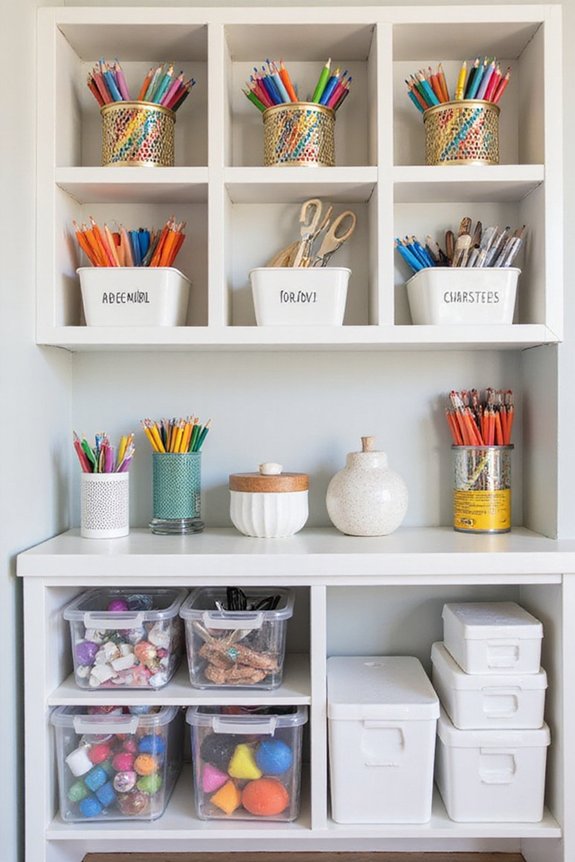
Why does even the most beautifully designed study room become chaotic within days? Poor storage planning. You need systems that make tidying up effortless for your child while keeping essentials within arm’s reach.
Smart storage transforms messy spaces into organized learning environments:
- Desktop organizers with compartments – Sort pens, pencils, erasers, and paper clips into designated spots so your child knows exactly where everything belongs.
- Rolling carts – Create mobile supply stations that move between activities and tuck away when not needed.
- Wall-mounted cubbies – Maximize vertical space for books, supplies, and project materials without cluttering the desk surface.
Conclusion
Your child’s study room isn’t just furniture and walls—it’s the fertile soil where their dreams take root. You’ve planted the seeds with thoughtful lighting, organized spaces, and personal touches. Now watch as curiosity blossoms into knowledge, scattered thoughts grow into focused minds, and creativity branches out in unexpected directions. You’re not just designing a room; you’re cultivating a garden where your child’s potential will flourish for years to come.

